Table of contents
White cabbage ( Brassica oleracea convar. capitata var. alba) or white cabbage is a popular head cabbage that can be prepared in many different ways, either raw or cooked. Also available in organic quality.
Use in the kitchen
What does white cabbage look like? White cabbage includes flat, pointed, but mostly round cabbage heads with a whitish-green color. Depending on the variety, white cabbage tastes slightly different, but in general it can be said that the taste is mild and slightly sweet. Red cabbage (red cabbage, blue cabbage) and savoy cabbage (wirz) are varieties of head cabbage, along with pointed cabbage.
Can you eat white cabbage raw? You can eat white cabbage raw. Whether raw, boiled, braised, steamed, fried or made into sauerkraut or fermented with lactic acid - white cabbage can be used in many different ways in the kitchen. Raw, it tastes excellent in a salad - e.g. with a simple dressing of rapeseed oil,herb vinegar, a little salt andpepper, or prepared as coleslaw with a strong vinaigrette. Raw, it also goes well in wraps, bagels or sandwiches. White cabbage braised in apple cider vinegar or white wine vinegar (e.g. Bavarian cabbage with smoked tofu) is a classic and a popular side dish for autumn and winter dishes. It also goes wonderfully in a warming soup with, for example, potatoes, carrots, celeriac, celery, leeks and chilli. White cabbage can also be used in stews and casseroles or as a filling for quiches, strudels and pancakes (e.g. with mushrooms). Large leaves are particularly suitable for making hearty cabbage rolls. Also recommended are spicy white cabbage and soy mince pans and oven-baked white cabbage slices, e.g. in a marinade with garlic and paprika powder, served with mashed potatoes. In Asia, white cabbage is used to stir-fry in a wok or to fill spring rolls. It is also highly valued as an ingredient in curries (e.g. with lentils, red bell peppers and ginger).
If you are not intimidated by vegetables in dessert, you can puree white cabbage with fruit such as apples and pears to make a winter smoothie bowl. Sweetened with dates, seasoned with a littlevanilla and cinnamon and decorated with nuts and fruit, this makes a nice change.
Spices such as caraway, anise or fennel seeds inhibit the flatulent effect and make white cabbage more digestible. To counteract the distinctive, sulphurous smell of cabbage when cooking, you can add a dash of vinegar to the boiling white cabbage.
Vegan recipe for coleslaw
Ingredients (for 4 people): ½ head of white cabbage (raw, organic), 1 tbsp salt, ½ lemon, 1 tbsp rapeseed oil, 1 tsp white balsamic vinegar, 1 tsp cumin (ground), ½ tsp cinnamon, ½ tsp pepper, 1 pinch of allspice (ground), 30 g walnuts, 1 orange.
Preparation: If necessary, remove the outer leaves of the white cabbage, quarter the rest and cut out the stalk in a wedge shape. Cut the cabbage into fine strips or grate it. Place the strips in a bowl and sprinkle with salt. Knead the white cabbage vigorously with your hands for 5-10 minutes. For the dressing, squeeze the lemon juice and mix it with oil, balsamic vinegar, cumin, cinnamon, pepper and allspice and add to the cabbage. Mix well. Roughly chop the walnuts and pour over the salad. Fillet the orange and arrange the fillets on the vegan coleslaw and serve.
Vegan recipes with white cabbage (raw) can be found under the note: " Recipes that have the most of this ingredient ".
| Not only vegans or vegetarians should read this: Vegans often eat unhealthily. Avoidable nutritional errors. |
Purchasing - Storage
White cabbage can be found in most supermarkets (e.g. Coop, Migros, Spar, Aldi, Lidl, Rewe, Edeka, Denner, Volg, Hofer, Billa) mostly all year round, but definitely in season. Some supermarkets also offer it pre-cut or sliced. Organic supermarkets (e.g. Denn's Biomarkt, Alnatura) have organic cabbage on offer. Weekly markets also sell particularly fresh and local cabbages, where they are in season in northern Central Europe (DA-CH) from June to March. Outside of the season, they come either from greenhouses or from southern European countries.
What do black spots mean on white cabbage? When buying, look for closed, crisp and fresh heads with a white-yellow color without damage, discoloration, dark spots or spots. If white cabbage has black spots inside or outside, this could indicate mold. If only a few spots on the inside of the white cabbage are black without affecting other tissue, you can use the rest without hesitation. Dark green outer leaves indicate the greatest possible freshness.
The availability of white cabbage varies depending on the size of the store, catchment area, etc. If you are interested, click on our recorded food prices for the DA-CH countries (above under the ingredient image). There you will find current prices from various supermarkets and their price development.
Storage tips
White cabbage will keep in the vegetable compartment of the refrigerator for up to three weeks. Undamaged cabbage heads can also be stored in a cool, dry cellar, where they will keep for several months. If you place them a little apart on a slatted rack covered with newspaper, there is no risk of the white cabbage getting black spots. It is also possible to hang the cabbage from the ceiling attached to the stalk. Cut heads are covered with a damp cloth or foil and stored in the refrigerator. Freezing is possible and extends the shelf life to around eight months. To do this, cut the cabbage into small pieces and pack it either raw or briefly blanched in salt water and dried in sealable freezer bags or a container.
Even if white cabbage does not ripen, the ripening gas ethylene from climacteric fruits stored nearby (e.g. apples or tomatoes) can cause the cabbage to spoil more quickly.
The shelf life of white cabbage can also be increased by lactic acid fermentation (fermentation) - i.e. by making sauerkraut. Instructions can be found under the ingredient sauerkraut (raw, unpasteurized).
Found wild
White cabbage is a cultivated variety of wild cabbage. The wild form Brassica oleracea can still be found in coastal areas in Europe. A close wild relative of cabbage is Brassica cretica, which is found around the Aegean Sea. 1,2
Ingredients - Nutritional values - Calories
With only 25 kcal and 0.1 g fat per 100 g, raw white cabbage is a particularly low-calorie and low-fat food. Protein is also very low (1.3 g/100g) - comparable to red cabbage (1.4 g/100g) and Chinese cabbage (1.2 g/100g). 3
Raw white cabbage contains plenty of vitamin K, namely 76 µg/100g (101% of the daily requirement). Savoy cabbage has a similar content (69 µg/100g). Broccoli contains slightly more (102 µg/100g) and kale has significantly more (705 µg/100g). 3
In addition, 100 g of white cabbage contains 37 mg of vitamin C (ascorbic acid), which makes up 46% of the daily requirement. This content can be compared with that of savoy cabbage (31 mg/100g) and lamb's lettuce (38 mg/100g). With 184 mg of vitamin C per 100g, yellow bell peppers contain about five times as much. 3
The folate content is 43 µg/100g (22% of the daily requirement). Chicory (37 µg/100g) and celery (36 µg/100g) contain a similar amount. Baby spinach has a significantly higher value at 194 µg/100g. 3
The complete ingredients of white cabbage (raw), the coverage of the daily requirement and comparison values with other ingredients can be found in our nutrient tables. In the article Nutrients explained you will get a detailed insight into the topic.
Health effects
Cruciferous vegetables, including white cabbage, are rich in glucosinolates, also known as mustard oil glycosides. These are sulfur-containing compounds that are responsible for the spicy and sometimes hot taste of cabbage. Hydrolysis of glucosinolates leads to the formation of biologically active compounds such as indoles and isothiocyanates. According to some studies, these plant substances can reduce the risk of developing lung cancer and colon cancer. In relation to hormone-sensitive cancers, conflicting results have been obtained, which is why more research is needed to gain more precise information. 4,5 When raw, the large intestine absorbs more of the isothiocyanates contained in cabbage products than from the cooked version, which is why it is best eaten raw. 6
Cruciferous vegetables also contain flavonoids and phenolic acids, which have anti-inflammatory, antibacterial, antiviral and antioxidant properties. The antioxidant activity of the brassicas can protect against diseases such as atherosclerosis, cardiovascular diseases, cancer and neurodegenerative diseases (eg Alzheimer's, Parkinson's). 7,8 One study observed a reduction in antioxidant content due to long storage periods. The highest content was found in freshly harvested cabbages. 8
When consumed regularly, white cabbage can support the immune system and have a positive effect on blood sugar and cholesterol levels. 9 Current research shows that the biological compounds contained in cabbage may have potential for an antidiabetic effect. Clinical studies are still needed to confirm the preventive treatment of type 2 diabetes. 10
Dangers - Intolerances - Side effects
White cabbage, like most other types of cabbage (eg red cabbage, cauliflower, savoy cabbage, etc.), can lead to painful flatulence when consumed in large quantities (especially raw) and especially in people with sensitive stomachs. Adding the spices mentioned above or a cup of caraway tea can help in such cases. 11 Exercise of any kind also helps to reduce the unpleasant feeling of gases in the intestines.
White cabbage and cabbage in general contain goitrogens (substances that cause the thyroid gland to enlarge). These can make thyroid problems worse because they impair the effect of thyroid hormones. People who suffer from an underactive thyroid gland are therefore advised to avoid eating raw brassica vegetables. 12 However, such effects are only of clinical significance if you eat very large quantities of cabbage, for example, and therefore eat only that food and are deficient in iodine.
Folk Medicine - Natural Medicine
In the traditional medicine of the Greek, Roman and Egyptian civilizations, cabbage was often used to relieve constipation and other gastrointestinal problems. 10 It was also used as an antidote for mushroom poisoning and to prevent and cure the negative effects of alcohol. Even today, raw cabbage is considered one of the best traditional remedies for hangovers and headaches. In addition, cabbage was once used to prevent sunstroke or to reduce fever. Other medicinal uses recorded in European folk medicine include treatments for rheumatism, sore throats, hoarseness, colic and melancholy. 13
Today, fresh white cabbage juice is still used to treat stomach ailments, such as ulcers in the stomach and duodenum and inflammation in the small and large intestines. Crushed cabbage leaves are used externally to heal ulcers and wounds. 11 White cabbage compresses are considered a tried and tested home remedy used to relieve inflammation and pain. A randomized, controlled parallel group study showed that cabbage compresses have anti-inflammatory properties for osteoarthritis in the knee. 14
Does white cabbage help with milk congestion? Even today, midwives recommend cabbage leaves as a compress for breast infections and milk congestion during breastfeeding. 13,15
Ecological footprint - animal welfare
The CO 2 footprint of regional white cabbage is very low at 0.1 kg CO 2 eq/kg and is even lower than that of other types of cabbage such as Brussels sprouts, kohlrabi or cauliflower. 20 The amount of water required to produce 1 kg of cabbage is also comparatively low. On average, around 280 l of water is needed, significantly less than for the production of cucumbers (353 l/kg) or raw peas (595 l/kg), for example. 21
Seasonality plays only a minor role in the amount of emissions from white cabbage. Early cabbage requires a fleece covering, and the sorting and cleaning of the fresh vegetables usually takes place directly in the field. For stored cabbage, however, the amount of electricity required for storage is a decisive factor, and rejects benefit biogas plants and partially compensate for this deficit. 22
Organic cultivation of white cabbage involves a lot of manual work, as the different ripening points require selective harvesting. Thanks to ecological fertilization, i.e. without synthetic fertilizers, the organic white cabbage heads are less contaminated with nitrates than conventionally cultivated white cabbage. 18 When shopping, it is therefore ideal to buy regional white cabbage from organic farming.
Worldwide occurrence - cultivation
White cabbage is one of the oldest known cultivated plants. 11,13 The origin of white cabbage is difficult to trace. According to Sanskrit records, the plants were cultivated in India in 3000 BC. Another hypothesis is that the ancestors of cabbage were cultivated on the European coasts almost 8000 years ago. White cabbage is now an economically important crop that is cultivated in more than 90 countries around the world. 13
Today, white cabbage is grown on more than 2.82 million hectares worldwide. The average yield from this area is 29.4 tonnes per hectare, resulting in a gross yield of 82.8 million tonnes. 17
Cultivation - Harvest
Depending on the desired cultivation period, you choose early, medium or late-ripening varieties. For early cabbage, you start growing in February - ideally on a bright windowsill or in a greenhouse. The early-ripening plants - or purchased seedlings - can be planted out in the garden from April at a distance of between 40 and 80 cm. Seeds of medium and late-ripening varieties are sown in May. In areas with a very favorable climate, sowing is also possible at the end of July or August, when the cabbage plants are best overwintered under a protective film. The bed should be sunny to partially shaded and the soil should be loose to slightly loamy and rich in nutrients. The plants benefit from loosening the soil a little during the growth phase and watering regularly on dry days. Organic fertilizer can be used to support growth every three to four weeks - but you should stop fertilizing a few weeks before harvest. The earliest variety, the early cabbage, is ready for harvest in June, other early varieties are harvested from July, later varieties until winter, as long as the temperatures remain above -4 °C. 16
When it comes to cruciferous plants, it is important to maintain a good crop rotation. This also means that a break of at least four years between crops must be observed in order to prevent certain soil-related diseases and to ensure a good yield. In organic farming, it is recommended to grow legumes as a pre-crop for the heavy feeder, which ensures a good and regular supply of nitrogen. Since young plants (not seeds) are also grown in commercial farming, the weed pressure is not too great and the emerging weeds can be easily managed mechanically. 19
Further information
White cabbage ( Brassica oleracea convar. capitata var. alba) is a variety of head cabbage and belongs to the cruciferous family (Brassicaceae). It includes many varieties. Most white cabbage varieties are round-headed. Other cabbage varieties have a different shape, e.g. pointed cabbage or pointed cabbage. Filderkraut is a firmer variant of pointed cabbage, with stronger leaves. Jaroma cabbage (Jaroma cabbage) is an old variety, with a flattened shape and a slightly milder taste. Early cabbage varieties and pointed cabbage varieties are a little looser, while autumn cabbage varieties and long-lasting cabbage varieties are rather firm and weigh several kilograms. The latter are mainly used for processing into sauerkraut (fermented).
The species cabbage ( Brassica oleracea) also includes cauliflower, Brussels sprouts, kohlrabi, broccoli and kale.
Alternative names
White cabbage (white cabbage) is also called white cabbage (white cabbage), white cabbage, Kabis, Kraut, Kappes, Kaps, Kappus or Kobis. The word "Kappes" is common in the Rhineland and Ruhr area and comes from the Latin "caput", which means head. What is Kabis? In German-speaking Switzerland, white cabbage is called Kabis or "Chabis" and is still considered a synonym for nonsense or rubbish in this language area. Incorrect spellings (e.g. Weiskohl, Weikraut, Weiss Kraut, Weißkraur, Weis Kraut, Weißkrsut, Weisskrsut, Kabis weiss, Kabis Kohl, Weisskraur, Weiß Kraut, Kabiss, Kabsis, Kakbis, Weiskraut, weiskrsut) creep in.
In English, white cabbage is called white cabbage.
Bibliography - 22 Sources
| 1. | Mabry ME, Turner-Hissong SD, Gallagher EY, McAlvay AC, An H, Edger PP, u. a. The evolutionary history of wild, domesticated, and feral Brassica oleracea (Brassicaceae). Mol Biol Evol. 2021;38(10):4419–34. |
| 2. | Cabi.org Dixon GR. Origins and diversity of Brassica and its relatives. 2007. |
| 3. | USDA United States Department of Agriculture. |
| 4. | Higdon JV, Delage B, Williams DE, Dashwood RH. Cruciferous vegetables and human cancer risk: epidemiologic evidence and mechanistic basis. Pharmacological Research. 2007;55(3):224-36. |
| 5. | Pamplona-Roger JD. Heilkräfte der Nahrung. Advent-Verlag: Zürich. 2006: 182-186. |
| 6. | Rungapamestry V, Duncan AJ, Fuller Z, Ratcliffe B. Effect of cooking brassica vegetables on the subsequent hydrolysis and metabolic fate of glucosinolates. 2007;66(1):69-81. |
| 7. | Mageney V, Neugart S, Albach DC. A guide to the variability of flavonoids in Brassica oleracea. Molecules. 2017;22(2):E252. |
| 8. | Hounsome N, Hounsome B, Tomos D, Edwards-Jones G. Changes in antioxidant compounds in white cabbage during winter storage. Postharvest Biology and Technology. 2009;52(2):173–9. |
| 9. | BzfE Bundeszentrum für Ernährung. Kohl – Vielseitig und vitaminreich. 2017. |
| 10. | Uuh-Narvaez JJ, Segura-Campos MR. Cabbage (Brassica oleracea var. capitata): A food with functional properties aimed to type 2 diabetes prevention and management. Journal of Food Science. 2021;86(11):4775–98. |
| 11. | Pahlow M. Das grosse Buch der Heilpflanzen. Gesund durch die Heilkräfte der Natur. Nikol Verlagsges. mbH: Hamburg; 2013: 191-193. |
| 12. | Bajaj JK, Salwan P, Salwan S. Various possible toxicants involved in thyroid dysfunction: a review. J Clin Diagn Res. 2016;10(1):FE01–3. |
| 13. | Šamec D, Pavlović I, Salopek-Sondi B. White cabbage (Brassica oleracea var. capitata f. alba): botanical, phytochemical and pharmacological overview. Phytochem Rev. 1. 2017;16(1):117–35. |
| 14. | Lauche R, Gräf N, Cramer H, Al-Abtah J, Dobos G, Saha FJ. Efficacy of Cabbage Leaf Wraps in the Treatment of Symptomatic Osteoarthritis of the Knee: A Randomized Controlled Trial. Clin J Pain. 2016;32(11):961-971. |
| 15. | Hebamme-meckenheim.de Kohlwickel bei Milchstau. |
| 16. | Plantura.garden Weisskohl anbauen: Aussaat, Pflege und Erntezeit. |
| 17. | Shokirov AJ, Lapasov SS, Shokirov KJ. Scientific and practical fundamentals of growing cabbage (Brassica capitata lizg.) in Uzbekistan. IOP Conf Ser: Earth Environ Sci. 2021;939(1):012044. |
| 18. | Pini U. Das Bio-Food Handbuch. Ullmann Verlag: Potsdam; 2014: 809-810. |
| 19. | Oekolandbau.de Ökologischer Kohlanbau. 2021. |
| 20. | Reinhardt G, Gärtner S, Wagner T. Ökologische Fussabdrücke von Lebensmitteln und Gerichten in Deutschland. Institut für Energie - und Umweltforschung Heidelberg. 2020. |
| 21. | Mekonnen MM, Hoekstra AY. The green, blue and grey water footprint of crops and derived crop products. Hydrol. Earth Syst. Sci. 2011; 15: 1577-1600. |
| 22. | Müller-Lindenlauf M, Zipfel G, Rettenmaier N, Gärtner S, Münch J, Paulsch D, Reinhardt G. CO2-Fussabdruck und weitere Umweltwirkungen von Gemüse aus Baden-Württemberg. 2013. |

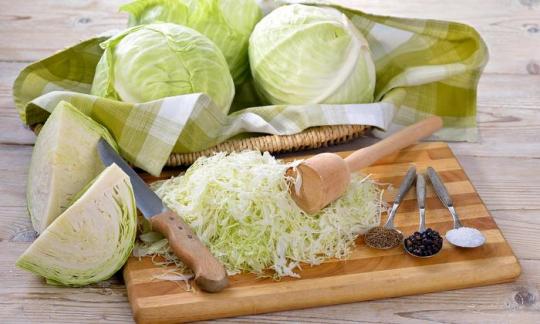

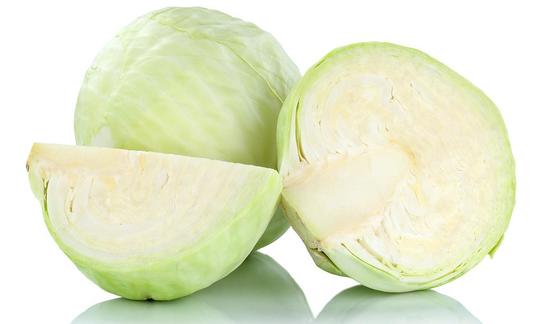

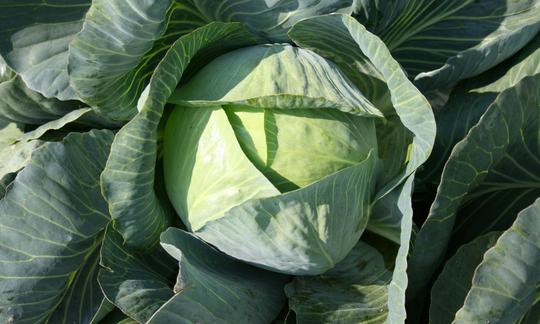

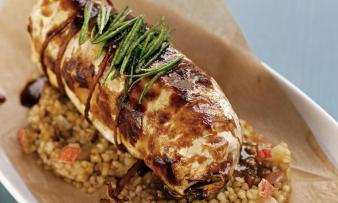

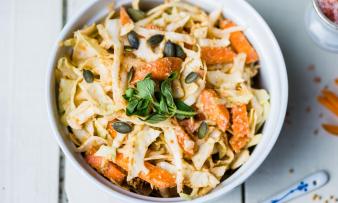





Comments